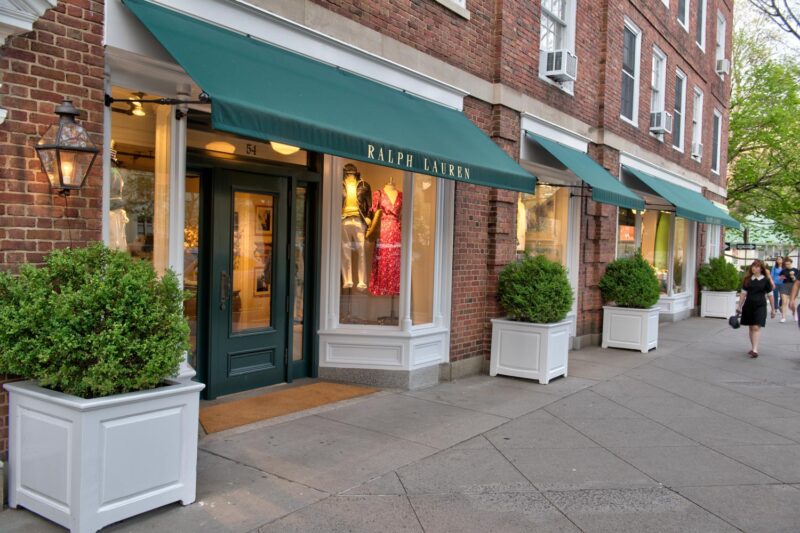
Trends
The Skinny on Princeton's New Money
Thanks to the success of biotech companies like Novo Nordisk—makers of Ozempic and Wegovy—the prestigious college town has fattened up.
There’s always been money in Princeton, New Jersey. But unlike other wealthy enclaves such as Greenwich, Connecticut or Southampton, New York, Princeton’s reputation was based solidly on the presence of its namesake Ivy League university.
The image of the town included the ivy-covered campus, tree-lined avenues with stately old homes, and a main street filled with upscale, preppy clothing stores along with some student-friendly eateries. The kind of street that Albert Einstein—who lived in Princeton and gave lectures on campus in the 1930s—and other tweed-jacketed professors would feel comfortable strolling down after an afternoon of teaching or research.
If that’s your image of Princeton, think again. The town’s main shopping street now looks more like Madison Avenue than College Town. Hermès is moving into the site of a former Ann Taylor (the huge store will open next year). The former Dunkin’ Donuts is now Mtea, a tea/sushi/dessert spot. And a Panera Bread is gone, replaced by Maruishi, a Japanese market and deli.
Call it the Ozempic Bump. Novo Nordisk has been a Princeton denizen for ten years, but thanks to the popularity of its weight loss drugs, Ozempic and Wegovy, the fortunes of the company have recently soared. “It’s not a sheltered little private bedroom community anymore,” Gerri Grassi, a vice president of Berkshire Hathaway HomeServices, Fox & Roach Realtors, told The New York Times.


Right across Nassau Street from the main university gates is a Hamilton Jewelers advertising David Yurman jewelry and Rolex and Patek Philippe watches in its windows. The convenience store down the street has a Bitcoin ATM. Vacancies that open up on Palmer Square and Nassau Street—the two main shopping areas—are being filled with the likes of Lilly Pulitzer, Johnny Was, and Faherty.
Hamilton Home and Arhaus offer upscale home furnishings and gifts that are hardly the kind of place where college students go to outfit their dorm rooms. Then again, maybe they do. About three-quarters of Princeton students come from families in the top 20 percent income bracket.
The U.S. Census Bureau’s American Community Survey finds that Princeton, a town of approximately 18 square miles and 31,000 residents, has a median household income of around $165,000, more than double the national figure—making it one of the wealthiest towns in the country. Perhaps that’s no surprise, given that income in the U.S. tends to rise with levels of education, and in Princeton an estimated 85 percent of adults have a bachelor’s degree or higher, compared to 34 percent of adults nationwide. And, according to the latest government data, Princeton’s poverty rate—already low—dropped 16 percent in just a year.



These days the town notables include actor Andrew Shue and director Steven Spielberg, who owns a large house near the university, on top of a hill with a view of the New York City skyline.
“There’s an increasing influx of celebrities,” says Laurel Cecila, Chief Marketing Officer at Callaway Henderson Sotheby’s International Realty in Princeton. And since the university has often been the school of choice for the offspring of the rich and famous, the celebrity parents themselves are fixtures in the town as well. “There are high-profile students going to Princeton,” says Cecila, who politely declines to mention any names, “and the parents follow the kids. Some of these parents are buying homes in the area so they can spend time with their children.” Average home sale prices, she says, are up by 12 percent. “We’re on track to have our best year in high-end—that’s defined as properties over $2.5 million—ever. Last year was a record high as well.”



Located about halfway between New York City and Philadelphia, the town was considered too long a commute from either city by many professionals. But the new work-at-home normal makes Princeton look more attractive to urbanites who would never have considered becoming part of the bridge-and-tunnel crowd before. “We’re suburban without the generic vibe,” Cecila adds.
Princeton wasn’t always this way. A sign welcoming people to the town used to state that it was settled in 1683, but the date was recently removed in recognition of the indigenous Lenni Lenape people who were there earlier. The university was founded in 1746 as The College of New Jersey (now the name of a separate institution of higher ed in New Jersey). And for a few months in 1783 the town of Princeton was actually the nation’s capital, with Congress convening in Nassau Hall, the oldest building on the college campus. It was at Nassau Hall that the news of the peace treaty with Great Britain was first received.
If you’re interested in visiting, you might want to avoid reunion weekend—May 23-26, 2024—when 25,000 Princeton University alumni descend on the town to march in the annual P-rade wearing elaborate orange-and-black tiger-striped clothing to honor their alma mater. Then again, you might get a thrill seeing real estate moguls and cardiac surgeons dressed in these rather loud and, yes, tacky outfits. Even better, you never know which celebrity alumni will show up to join the fun. Elena Kagan, Eliot Spitzer, Brooke Shields, Jeff Bezos, and hundreds more famous names are Princeton grads. If you go, be sure to learn the college cheer first: “Boom! A-h-h-h! Hooray, hooray, hooray! Tiger siss-boom-ah, Princeton!”
Hero image: Princeton University arches by luvemakphoto / Getty Images



